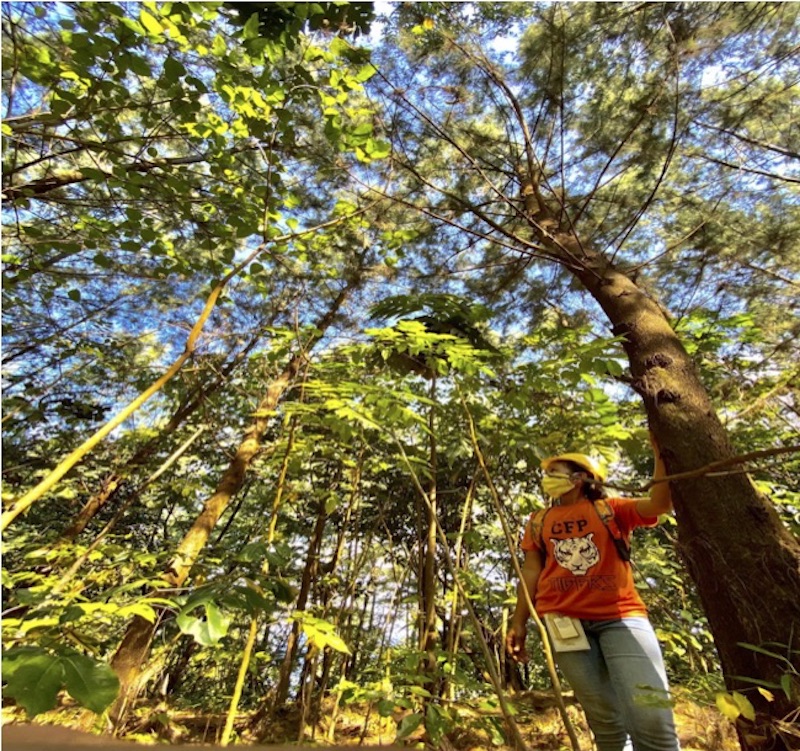Miyawaki is a technique, pioneered by Japanese botanist Akira Miyawaki, on how to grow plants and build forests 10 times faster. The concept is gaining consideration all over the world now that companies and institutions are being marked by society on how they address environment-conservation issues.
For mining companies, the big challenge has always been growing trees in lateritic soil that are deficient in nutrients. While the Miyawaki Method is building forests on barren lands which is called ‘afforestation’, miners rehabilitate and strive to build forests on mineralized soil, which is called ‘reforestation’.
According to HMC’s environment manager, Forrester Manuel A. Torres, the traditional approach of reforestation requires systematic spacing between crops and trees consistent with the ‘carrying capacity’ principle of ecology – where only a certain number of seedling can be accommodated per hectare of land.
Opposite to that, the Miyawaki approach is dependent on natural regeneration with the main goal to achieve a more natural forest-like vibe with grasses, shrubs, and multiple sub-species added to the main trees, all randomly thrown together without specific patterns based on the principle of native planting.
“The traditional methods used by miners and the Miyawaki principle may differ in some of its planting strategies but the results yield the same kind of natural forest stand,” explained Torres.
“I have not heard of Miyawaki before we started the rehabilitation at Eastern 1. We simply called our program ‘high-density planting strategy,’ initially an experiment which turned out to have very similar goals to Miyawaki, which is to get the target area greener and leafier in half the expected time.
HMC started with picking out good provenance forest tree seedlings mixed them with fast-growing and indigenous forest tree seedlings that are naturally occurring in the area, and applied careful maintenance and tending practices to ensure quality growth in a short fragment of time.
As soon as the vegetation renders its microclimate, the natural characteristics of ‘endozoochory’ sets in wherein seed dispersal is aided by flora and fauna – ‘the birds and the bees, and flowers and trees’.
Just like the Miyawaki vision, HMC is seeing a display of lush vegetation to the mined-out area to around 4-6 years.
“This is an exciting case study as the people expect to see more forests and greeneries in the communities,” remarked Torres.
For NAC and all its subsidiaries – Cagdianao Mining in Dinagat Islands (CMC); Dinapigue Mining in Isabela (DMC); Rio Tuba Nickel Mining in Palawan (RTN) and Taganito Mining (TMC) in Surigao del Norte; and of course, HMC – environment-conservation is a critical part of business strategy, and, ‘building forests’ are ‘key performance indicators’ across the organization.
According to Rogel C. Cabauatan, AVP for Environment and Community Relations at NAC, the company has been a part of the Philippine government’s national greening program since its inception and has recorded some P5.3 Million trees planted across the organization from 2009 to 2020.
“We have proof of concept in all our mine sites where you can now find dense forests in mined-out areas that are a prominent part of our showcase as a proud responsible mining company,” Cabauatan said.
Engineer Francis J. Arañes, Jr., HMC Resident Mine Manager, cannot wait to open the site to visitors.
“We look forward to when this health crisis is over, because we have great visuals at the mine site that we want to share with the communities. As conscious stewards of the environment, it will be an honor to show-off the forests we helped build,” Arañes remarked.


